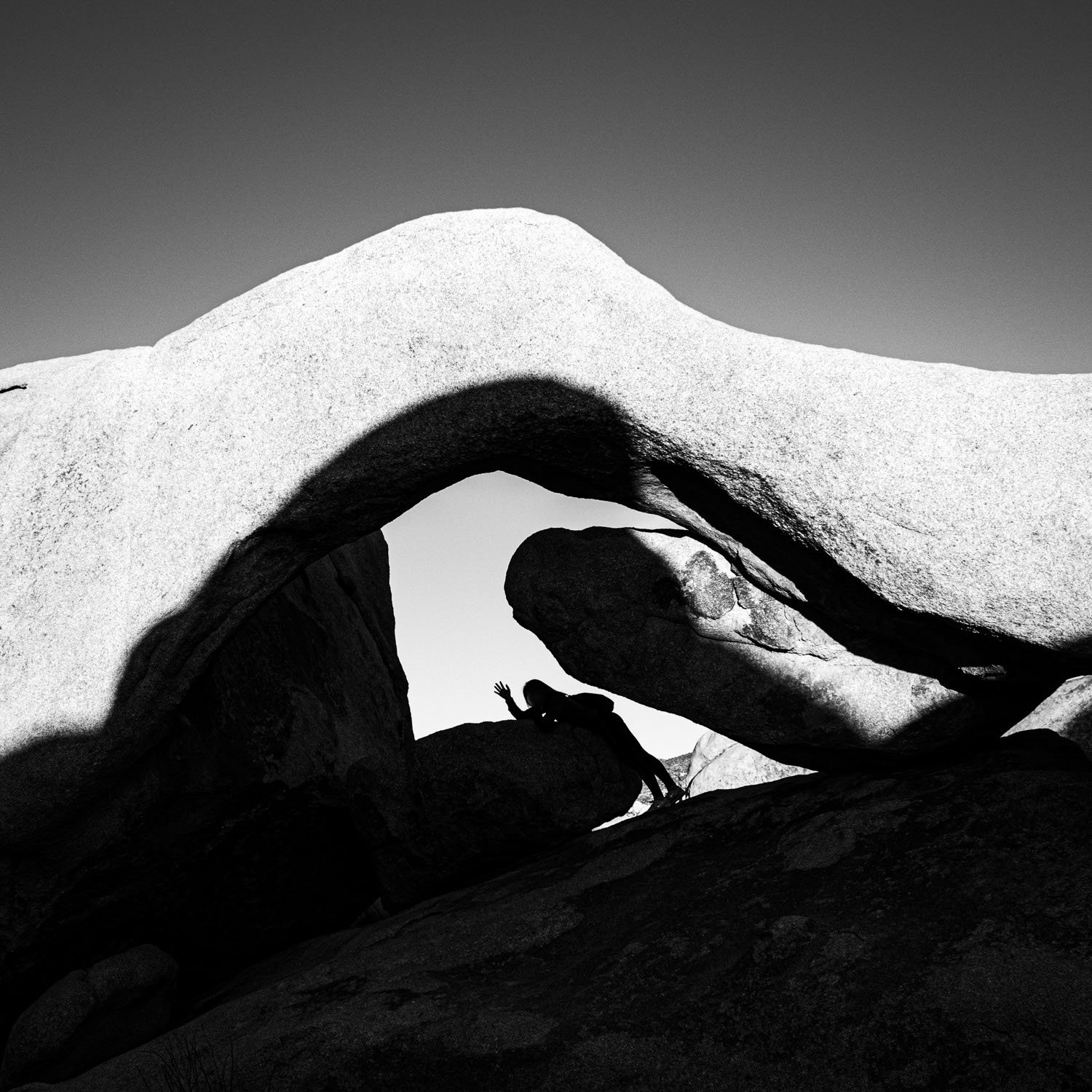Joshua Tree National Park - Arch Rock & Cap Rock
Joshua Trees grow in many different sizes and shapes. Here, you can see one of the bigger Joshua Trees in the park.Joshua Tree National Park is one of my favorite travel destinations in Southern California. It is one of the few places that transform your sense of time and space so dramatically that it makes you feel like you've teleported into another planet. In terms of the environment, it's hot, dry, and dead quiet. In terms of visuals, it has striking stone mountains of varying sizes, diverse landscapes, stunning geology, and, last but not least, Joshua Trees. It's truly a unique place, and you should put it on the top of your travel list.
Table of Contents
Here's some information about Joshua Tree National Park
Where does the name “Joshua Tree” come from?
According to the National Park Service’s website,
By the mid-19th century, Mormon immigrants had made their way across the Colorado River. Legend has it that these pioneers named the tree after the biblical figure, Joshua, seeing the limbs of the tree as outstretched in supplication, guiding the travelers westward.
What are some of the things you can do in Joshua Tree National Park?
Check out the Joshua trees
Camping
Hiking
Stargazing
Rock climbing
What is so special about Joshua Tree National Park?
Disconnecting in the serene solitude of this natural wonderland recharges your soul and mind. It's hard to explain, but visiting here would make you understand or, better yet, feel it yourself.
More on what makes this park so special
Depending on when and where you are inside the park, you might experience complete solitude and fully immerse yourself in this amazing collection of natural wonders that spark adventure. I know it might sound strange in this hot desert setting, but taking time to disconnect from everything can be incredibly beneficial. It not only soothes your soul but also recharges your mental energy. (Yeah, nature has a way of making you feel more spiritual.) I've found this incredibly helpful when I return to the busy everyday life after each trip. I can't quite put into words why or how it works, but I'm pretty sure that if you visited this place even once, you'd understand what I'm trying to convey here. Or better yet, you'd actually feel it for yourself.
What do I need to be mindful of when visiting Joshua Tree National Park?
Outdoor activities in this area can be risky due to intense heat and the chance of getting lost. Remember to bring water, sun protection, and do thorough research beforehand. If you're exploring remote areas, a GPS device is recommended for safety. Nature is beautiful but can also be dangerous, so come well-prepared.
More on what to watch out for in the park
Outdoor activities here can become extremely risky due to the intense heat and the chance of losing your sense of direction. So, no matter what plans you have, make sure to bring lots of water and sun protection. Also, take time to research ahead about what you're planning to do and what's necessary. For instance, if your plans involve exploring remote areas away from the usual tourist spots, having a GPS device is smart. It'll help you keep track of your location through satellites and even send out SOS signals if there's an emergency. Remember, nature is stunning but it can also be dangerous, so be sure to come well-prepared.
Where in Joshua Tree National Park can I go camping?
Jumbo Rocks Campground - Reservation Required
Blackrock - Reservation Required
Cottonwood - Reservation Required
Indian Cove - Reservation Required
Ryan - Reservation Required
Belle Campground - First Come, First Served
Hidden Valley Campground - First Come, First Served
White Tank - First Come, First Served
Dispersed Camping - Outside of North and South entrances
More on camping
There are several campgrounds available in Joshua Tree National Park. Some popular options include Jumbo Rocks, Belle, and Hidden Valley campgrounds. It's important to book in advance and check for availability, if reservation is required, before your visit. If you're looking for a camping experience outside of the national park, there are several dispersed campsites available. These campsites are typically located on public lands and offer a more rustic experience than traditional campgrounds. You can find them outside of both the north and south entrance. Despite the absence of amenities such as running water and toilets, these accommodations offer a one-of-a-kind chance to fully embrace nature and experience a tranquil retreat; be sure to check local regulations before setting up camp, as permits or fees may be required in some areas.
Here is a photo taken at sunrise on one of our first ever camping trip to Joshua Tree National Park. It's hard to describe the beauty of it with words.Check out our experiences in Joshua Tree National Park
Joshua Tree is a vast land with too many attractions to check out in one day. We've visited the park many times and feel like we've barely scratched the surface.
Here are some of the trails to which we've been.
Arch Rock Nature Trail
From the NPS site,
Arch Rock provides a short 1.4 mile hike to 100 feet elevation gain to an arch
There's a parking lot where you have to cross the road from to begin the trail. The trail is easy and suitable for everyone. The best part is the breathtaking views of the many big rocks and special formations along the way. And the cherry on top is the stunning Arch Rock at the end. I recommend going just before sunset to catch the amazing colors on the rocks. Keep in mind, the trail can be a bit slippery due to its rocky surface, so it's a good idea to wear shoes with good grip.
What a fantastic place to explore! It was our first hike in Joshua Tree, and it was really enjoyable.
Click on any photo below to see it in full size
Cap Rock Nature Trail
From the NPS site,
This trail is a 0.4-mile (0.6-km) loop with minimal elevation change. It winds through Joshua tree woodland and between spectacular monzogranite rock formations, where you will find excellent examples of species capitalizing on microhabitats such as shady boulder crevices. Juniper woodlands are represented here, as well as a spectacular diversity of desert shrubs.
You can get really close to the amazing rock formations and various kinds of desert plants on this flat, circular trail. According to the NPS website I mentioned earlier, there are three parts along this trail, each with different groups of plants living in them. Depending on the time of year, you'll come across different sets of these plants. So, take a moment to spot and enjoy these beautiful desert plants, along with the stunning rock formations.
Click on any photo below to see it in full size
Thank you for taking the time to read this post. We are delighted to share some valuable information and our personal experiences in the stunning Joshua Tree National Park. Don't forget to explore our other exciting adventures as well!














